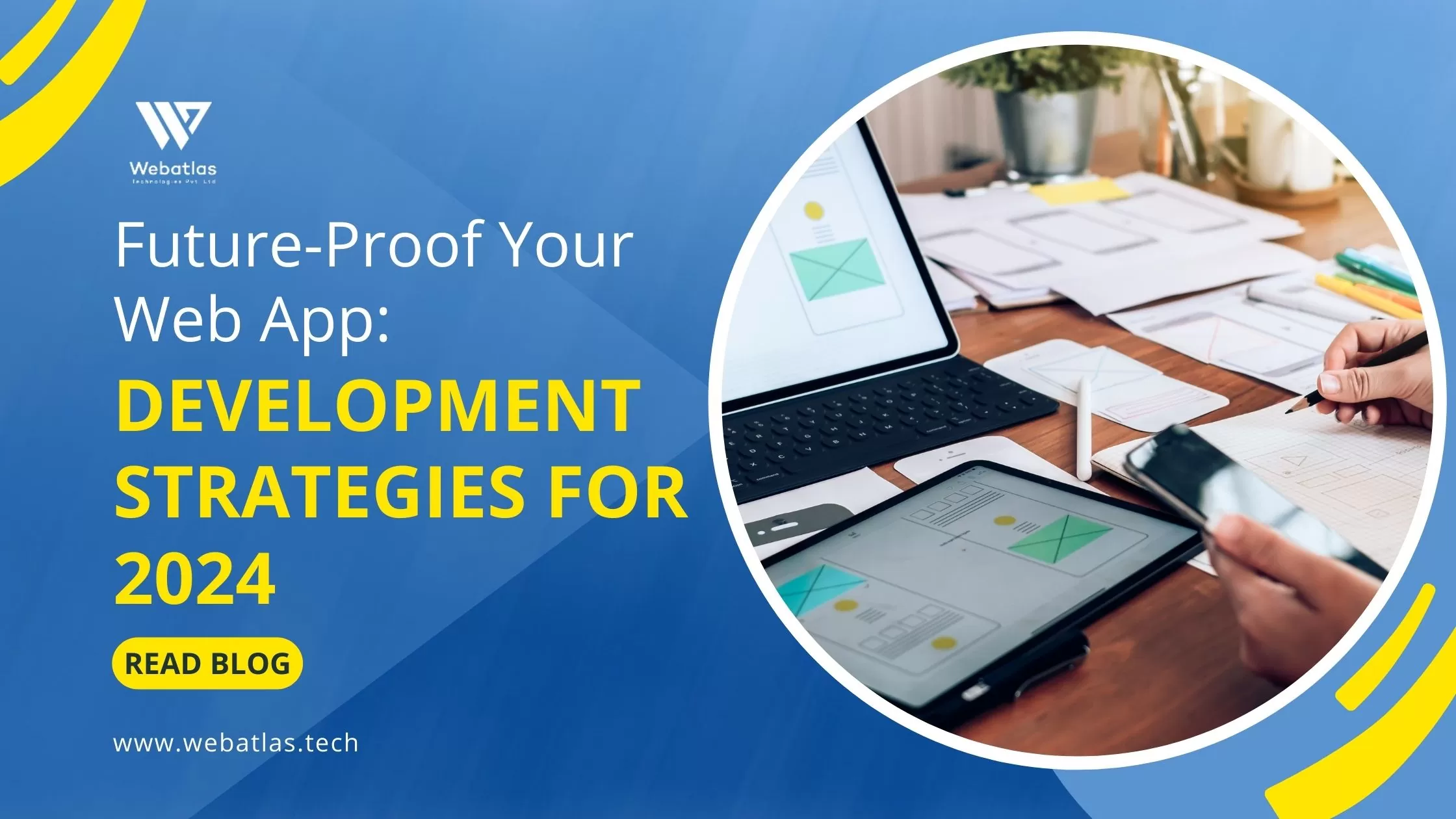Building Web Apps in 2024: A Comprehensive Guide

The ever-evolving realm of web application development is constantly brimming with novel technologies and frameworks. However, the fundamental process of crafting a web app remains surprisingly consistent. This extensive guide equips you with the knowledge to create a thriving web application in 2024, whether you’re a seasoned developer or just beginning your journey.
1. Define Your Vision and Scope: Charting the Course
Every exceptional web app originates from a clearly defined vision. Meticulously identify the problem your application aims to solve and the value it delivers to users. Outline the features and functionalities that are critical for the initial launch, and strategize for upcoming iterations based on user feedback.
Prioritizing Market Research and User Needs: Before diving headfirst into development, conduct thorough market research to validate your concept. Identify your target audience, their pain points, and existing solutions in the market. This initial groundwork ensures you’re creating a web app that addresses a genuine user need and stands out from the competition.
Crafting a Minimum Viable Product (MVP): It’s not always necessary to build a feature-rich application from the get-go. Develop a Minimum Viable Product (MVP) that includes the core functionalities that solve the core user problem. Launching an MVP allows you to gather real-world user feedback and iterate based on their needs, ensuring you’re building a web app that resonates with your target audience.
Also Read- Progressive Web Apps (PWAs): Bridging the Gap Between Apps and Websites
2. Design for User Experience (UX): Shaping the User Journey
Usability reigns supreme. Craft a user interface (UI) that is intuitive, aesthetically pleasing, and responsive across various devices. Prioritize user flows and guarantee a smooth and efficient experience for your target audience. Utilize UI/UX design tools and conduct user testing to refine your design before development commences.
Information Architecture and Navigation: Design a clear information architecture that facilitates users in effortlessly finding the information they seek. Develop an intuitive navigation system that allows users to move seamlessly through the web app without getting lost.
Wireframing and Prototyping: Create wireframes and prototypes to visualize the layout, functionality, and user flow of your web app. These tools enable you to gather early feedback from stakeholders and users, allowing for refinements before investing significant time and resources into development.
3. Select Your Tech Stack: Building the Foundation
The technology stack you choose dictates how your web app will be built and maintained. Here’s a breakdown of the front-end and back-end considerations:
Front-End Development:
-
The Essential Trio: HTML, CSS, and JavaScript are the fundamental building blocks of any web application’s front-end. HTML structures the content, CSS styles the visual presentation, and JavaScript adds interactivity and dynamic behavior.
-
JavaScript Frameworks: For enhanced development efficiency and pre-built components, consider popular JavaScript frameworks like React, Angular, or Vue.js. These frameworks offer a structured approach to front-end development, streamlining the process and promoting code reusability.
Back-End Development:
-
Server-Side Languages: The back-end, also known as the server-side, handles data processing, business logic, and interactions with databases and external services. Popular back-end languages include Python, Java, or Node.js, each with its strengths and use cases.
-
Back-End Frameworks: For a structured and efficient back-end development process, leverage frameworks like Django (Python), Spring (Java), or Express.js (Node.js). These frameworks provide a foundation for building scalable and secure web applications.
API Integration: In today’s interconnected world, web applications often leverage APIs (Application Programming Interfaces) to access data and functionalities from external services. Carefully consider the APIs you’ll integrate with during the tech stack selection process.
Security Considerations: Security should be a top priority throughout the development process. Choose technologies and frameworks with a strong track record of security, and implement best practices for user authentication, authorization, and data protection.
Choosing the Right Web App Development Company: For complex projects or if you lack the in-house expertise, consider partnering with a reputable web app development company. A web app development company like Webatlas can provide valuable guidance on tech stack selection, development best practices, and security considerations.
4. Development: Bringing the Vision to Life
This is where the magic happens! The development phase translates your meticulously crafted design and chosen technologies into a functional web application.
Front-End Development Process:
-
Component-Based Development: Modern front-end development often utilizes a component-based approach. This involves breaking down the UI into reusable components that can be combined to create complex interfaces.
-
Single Page Applications (SPAs): Single Page Applications (SPAs) are a popular web application architecture that loads a single HTML page initially and dynamically updates the content without full page reloads. This can provide a faster and more seamless user experience.
-
Testing and Debugging: Throughout the front-end development process, rigorous testing is essential. Implement unit testing to ensure individual components function as intended, and conduct integration testing to verify how components work together. Utilize browser developer tools for debugging and optimization.
Back-End Development Process:
-
API Development: If your web app exposes data or functionalities to other applications, you’ll need to develop well-documented and secure APIs.
-
Database Management: Choose a suitable database technology (relational, NoSQL, etc.) based on your data storage needs. Implement robust data access logic and secure data handling practices.
-
Server-Side Logic: Develop the server-side code that handles user requests, processes data, and interacts with the database and external APIs.
-
Testing and Debugging: Similar to the front-end, implement unit testing and integration testing on the back-end to ensure all functionalities work as expected. Utilize debugging tools and logging mechanisms to identify and fix issues.
5. Testing and Quality Assurance (QA): Ensuring a Flawless Experience
Rigorous testing is crucial for a polished and functional web app. A multi-layered testing approach ensures a high-quality user experience:
-
Unit Testing: Test individual components of your application (front-end and back-end) in isolation to verify they function as intended.
-
Integration Testing: Test how different components of your application interact with each other and ensure seamless data flow.
-
Functional Testing: Test the overall functionality of your web app from a user’s perspective, ensuring all features work as specified.
-
Regression Testing: After making code changes or adding new features, perform regression testing to ensure existing functionalities haven’t been broken.
-
Usability Testing: Conduct usability testing with real users to identify any usability issues or areas for improvement in the user interface and user flow.
-
Security Testing: Perform security testing to identify and address any vulnerabilities in your web application that could be exploited by attackers.
6. Deployment and Launch: Sharing Your Creation with the World
Once testing is complete, it’s time to deploy your web app to a web server. Here are some common deployment options:
-
Cloud-Based Hosting: Cloud-based platforms like Amazon Web Services (AWS), Microsoft Azure, or Google Cloud Platform (GCP) offer scalable and reliable hosting solutions for web applications.
-
On-Premise Hosting: For applications with specific security requirements or those dealing with sensitive data, some companies opt for on-premise hosting in their own data centers.
Monitoring and Maintenance: Launching your web app is just the beginning. Continuously monitor your application’s performance, address any bugs or issues that arise, and implement security updates to ensure your web app remains secure and functional.
7. Beyond the Launch: Continuous Improvement and Growth
A successful web application is a living entity that needs to evolve and adapt over time. Here are some key considerations for ongoing success:
-
Gather User Feedback: Actively solicit user feedback through surveys, user interviews, and analytics data. Use this feedback to identify areas for improvement and prioritize new features based on user needs.
-
Iterate and Update: Based on user feedback and market trends, continuously iterate on your web app by adding new features, improving existing functionalities, and refining the user experience.
-
Embrace New Technologies: The web development landscape is constantly evolving. Stay updated on emerging technologies and frameworks that could enhance your web app’s functionality and user experience.
The Expertise of Webatlas in Web App Development
Partnering with a reputable web app development company like Webatlas can be invaluable throughout the entire development lifecycle. Webatlas’ team of experienced developers possesses the expertise to guide you through every stage, from concept development and tech stack selection to implementation, testing, deployment, and ongoing maintenance. We can leverage our knowledge of best practices and latest technologies to create a secure, scalable, and user-friendly web application that meets your specific business goals.
By following these comprehensive steps and staying committed to continuous improvement, you’ll be well-equipped to build a successful web application in 2024 and beyond. Remember, this guide provides a general roadmap, and the specific development process may vary depending on the complexity and unique features of your web app.
Let's talk about your project, or just come and say hello!
Webatlas Technologies is the fastest growing web and mobile app development company



